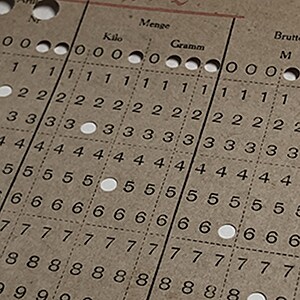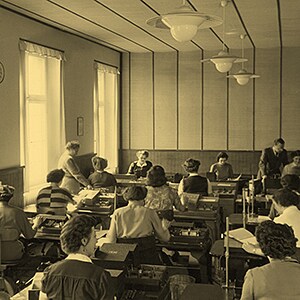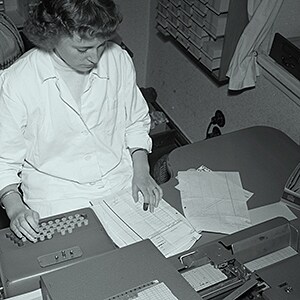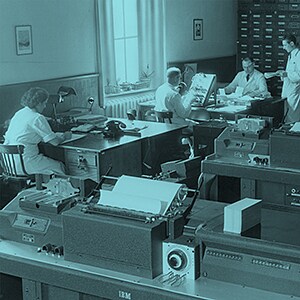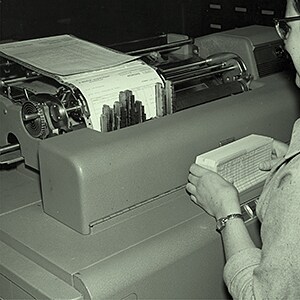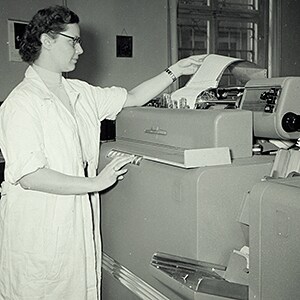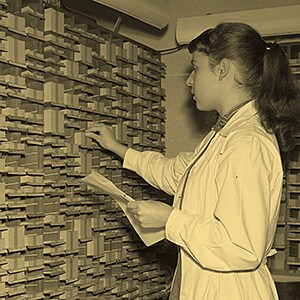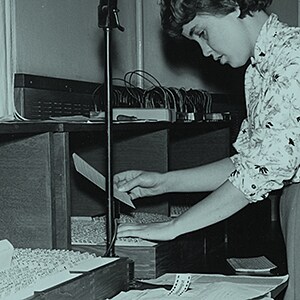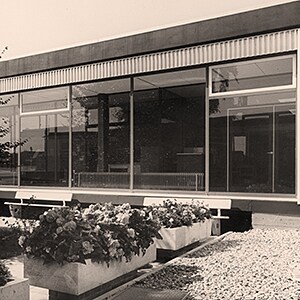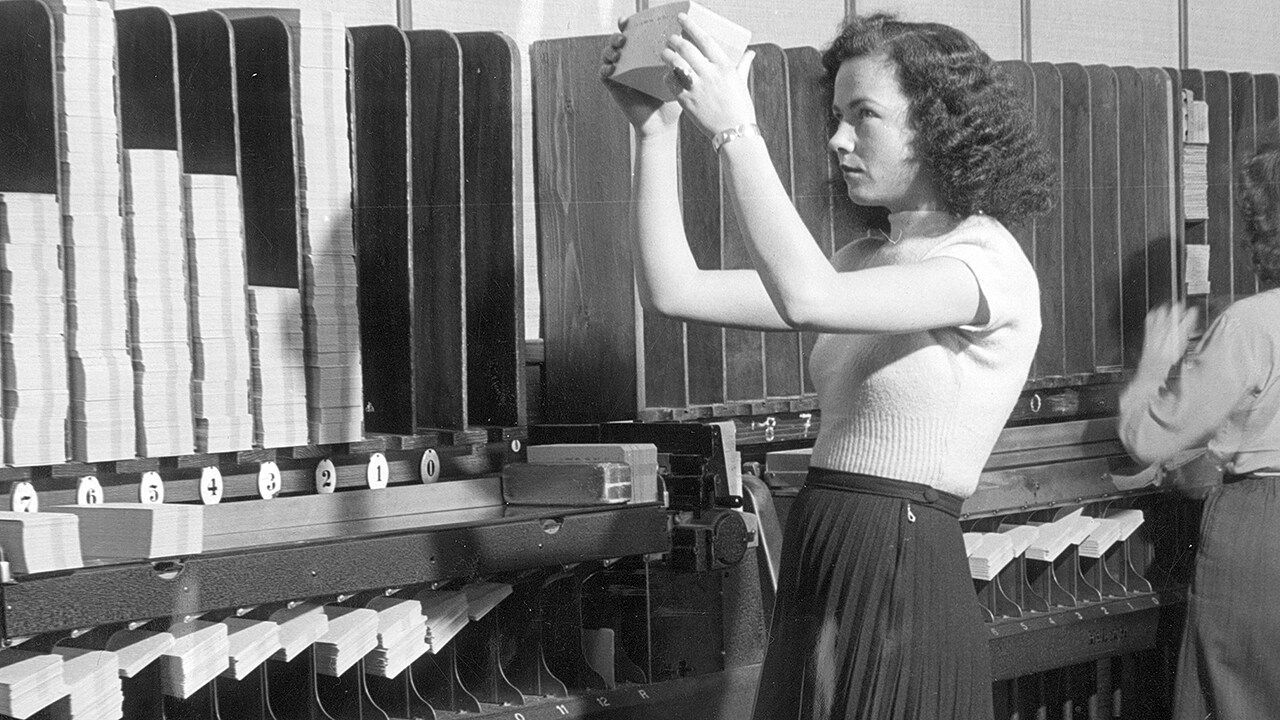
»The answer to the ultimate question of life, the universe and everything is ... 42!«
Douglas Adams, The Hitchhiker’s Guide to the Galaxy, 1979
The foundation for innovation and growth, curiosity and success, is the availability, dissemination and interconnection of knowledge. True technological revolutions are not uncommon. Gutenberg’s printing press is one, and the digital transformation of the world since the end of the 20th century is another. The idea of using holes as a data storage medium is first realized in the 18th century. Hermann Hollerith, the son of German immigrants to the United States, develops this system further at the end of the 19th century.
E. Merck, Darmstadt, Germany, begins working with the »Hollerith system« in 1922. Bookkeeping and Statistics are the first departments to enjoy the benefits of the new technology. Initial successes in rationalizing business processes are soon reported. More work is achieved with fewer employees. At first, the system deals only with numbers and their evaluation according to various criteria, because more information cannot be stored on the punch cards. But even with such simple means it is possible to analyze markets or plan purchases of raw materials and other inputs. For an experienced sales representative, these figures can prove highly valuable – or simply impress with their accuracy, as a report from the South America Department from 1924 reveals. The growing volume of data is just the basis. The key factor is the evaluation of the data by experienced employees.
At the end of the 1930s, the company changes over to the 80-digit punch card, and thus expands the company’s storage capacity enormously. The card offers spacefor 80 bytes. Achieving the equivalent of 200 GB of available hard drive capacity would take 2.5 billion punch cards.
The basic technical equipment required, in addition to the punch cards, is a hole punch machine, a sorting machine and a tabulating machine. The numbers 0 to 9 are arranged on the card in 80 vertical number columns. They are organized and compiled according to terms. There is one punch card for each individual business transaction. To enable serial analysis of large volumes of data, the information is recorded on the card in the form of a series of holes. The terms must be systematized for this purpose and coded by numbers. The punch cards are then organized in a certain sequence, depending on the objective, and finally translated back into a readable numerical code.
In the late 1950s, new technical developments allow letters and special characters to be represented in this form. The punch card becomes the basis of futurere search: Data on general research literature and on experimental substances are archived in a new central location. In addition, the company connects with other companies through a shared »documentation circle«, thus forming networks.
Punching holes in the cards requires concentration. The sound-absorbing ceiling reduces the noise of the machines. Starting in 1957, with the alphabet hole punch, more can be recorded than just numbers. Depending on the objective, the cards are organized by a sorting machine and are visually inspected. The latter is depicted in the large photo at the beginning of this chapter.
In 1952, using the tabulating machine, the punched holes are translated back into a numerical code. Addition, subtraction or balancing can be carried out in the process. Later, an alphabet-enabled tabulating machine that automatically adopts numbers and texts from the cards is used to generate invoices.
A largely stable market makes it possible to pre-punch cards with uniform product features and organize them in a »tub file«. Standardized cards are prepared for customer files as well. A glance at the data processing center in the mid-1960s shows that special security measures are still far in the future.

